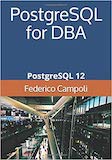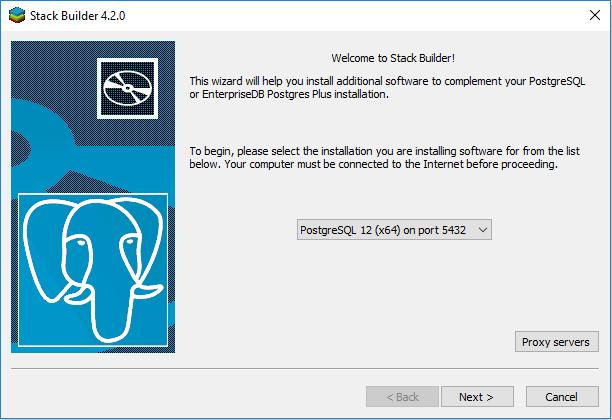


#Postgresql 13 upgrade#
If you want to upgrade your current PostgreSQL version to this new one, you have three main options which will perform this task. Now you have your cluster created, you can perform several tasks on it, like adding load balancers (HAProxy), connection poolers (PgBouncer), or new replication slaves from the same ClusterControl UI. To perform a deployment from ClusterControl, simply select the option Deploy and follow the instructions that appear.

#Postgresql 13 how to#
How to Deploy PostgreSQL 13įor this, we will assume that you have ClusterControl installed, otherwise, you can follow the corresponding documentation to install it. Now, let’s see how to deploy this new version. We just mentioned some of them to avoid a larger blog post. Make CREATE TABLE LIKE propagate a CHECK constraint’s NO INHERIT property to the created tableĪdd ALTER TABLE … DROP EXPRESSION to allow removing the GENERATED property from a columnĪdd ALTER VIEW syntax to rename view columnsĪdd ALTER TYPE options to modify a base type’s TOAST properties and support functionsĪllow DROP DATABASE to disconnect sessions using the target database, allowing the drop to succeedĪnd many more changes. Report planning-time buffer usage in EXPLAIN’s BUFFER output Generate an error if recovery does not reach the specified recovery targetĪllow control over how much memory is used by logical decoding before it is spilled to diskĪllow recovery to continue even if invalid pages are referenced by WALĪllow VACUUM to process a table’s indexes in parallel

Improve control of prepared statement parameter loggingĪdd leader_pid to pg_stat_activity to report a parallel worker’s leader processĪdd system view pg_stat_progress_basebackup to report the progress of streaming base backupsĪdd system view pg_stat_progress_analyze to report ANALYZE progressĪdd system view pg_shmem_allocations to display shared memory usageĪllow streaming replication configuration settings to be changed by reloadingĪllow WAL receivers to use a temporary replication slot when a permanent one is not specifiedĪllow WAL storage for replication slots to be limited by max_slot_wal_keep_sizeĪllow standby promotion to cancel any requested pause Reduce memory usage for query strings and extension scripts that contain many SQL statementsĪllow EXPLAIN, auto_explain, autovacuum, and pg_stat_statements to track WAL usage statisticsĪllow a sample of SQL statements, rather than all statements, to be loggedĪdd the backend type to csvlog and optionally log_line_prefix log output Improve performance when replaying DROP DATABASE commands when many tablespaces are in use Implement incremental sorting and improve the performance of sorting inet valuesĪllow hash aggregation to use disk storage for large aggregation result setsĪllow inserts, not only updates and deletes, to trigger vacuuming activity in autovacuumĪdd maintenance_io_concurrency parameter to control I/O concurrency for maintenance operationsĪllow WAL writes to be skipped during a transaction that creates or rewrites a relation, if wal_level is minimal Improve the optimizer’s selectivity estimation for containment/match operatorsĪllow setting the statistics target for extended statisticsĪllow use of multiple extended statistics objects in a single queryĪllow use of extended statistics objects for OR clauses and IN/ANY constant listsĪllow functions in FROM clauses to be pulled up (inlined) if they evaluate to constants More efficiently store duplicates in B-tree indexesĪllow GiST and SP-GiST indexes on box columns to support ORDER BY box point queriesĪllow GIN indexes to more efficiently handle ! (NOT) clauses in tsquery searchesĪllow index operator classes to take parameters Support row-level BEFORE triggers on partitioned tablesĪllow partitioned tables to be logically replicated via publicationĪllow logical replication into partitioned tables on subscribersĪllow whole-row variables to be used in partitioning expressions PartitioningĪllow pruning of partitions and partitionwise joins to happen in more cases Let’s start mentioning some of the new features and improvements of this PostgreSQL 13 version that you can see in the Official Documentation. PostgreSQL 13 New Features and Improvements In this blog, we will mention some of these new features and see how to deploy or upgrade your current PostgreSQL version. PostgreSQL 13 is available with many new features and enhancements. PostgreSQL, also known as the world’s most advanced open source database, has a new release version since last September 24 2020, and now it is mature, we can check what is new there to start thinking about a migration plan.


 0 kommentar(er)
0 kommentar(er)
